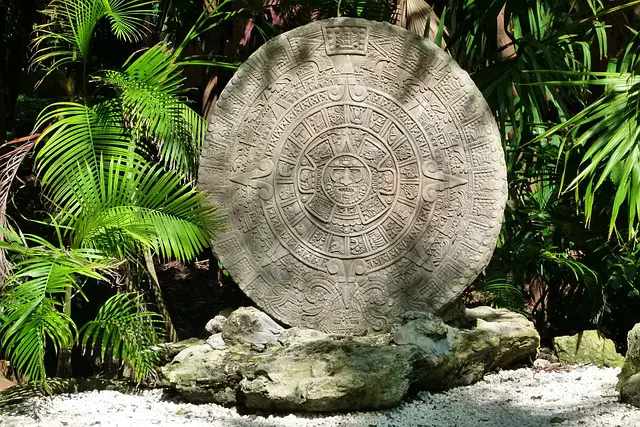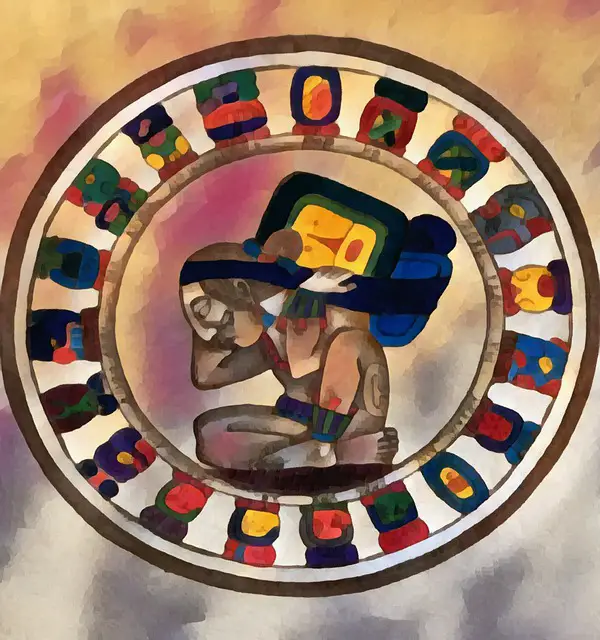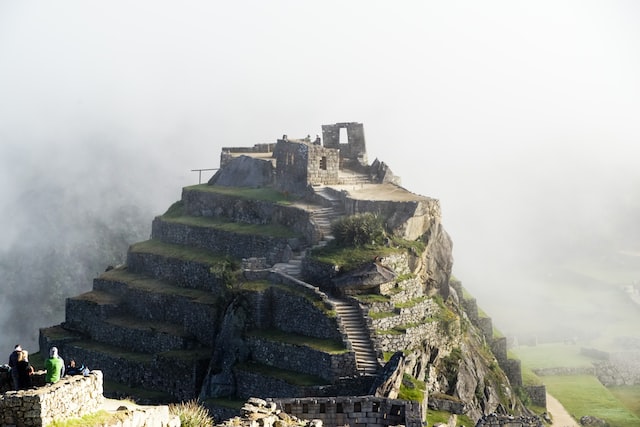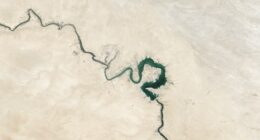The Aztecs and Mayans were two of the most influential civilizations in ancient Central America. Though they shared many similarities, such as a reliance on agriculture and similar writing systems, there are still distinct differences between them which can be found in their religion, art style, language and architectural styles. While each civilization has made its mark on world history, understanding these differences is key to fully appreciating what makes them so unique.
Who were the aztecs?
(Image by Dieter Martin from Pixabay )

The Aztecs were a Mesoamerican people who lived in central Mexico in the 14th to 16th centuries. They were nomadic people who migrated from place to place, and their culture was greatly influenced by the cultures they came into contact with. The Aztecs were known for their military prowess and for their practice of human sacrifice, which they believed would please the gods and ensure fertile crops and successful hunts.
Who were the Mayans?
(Image by Claudia from Pixabay )

The Maya civilization was one of the most dominant indigenous societies of Mesoamerica, with a population of approximately six million people spread across modern-day Mexico, Guatemala, Belize, and parts of Honduras and El Salvador. The Maya were known for their impressive architectural feats, including the construction of monumental pyramids and temples. They were also skilled artisans, creating works in stone, wood, textiles, and metals. The Maya developed a complex system of writing and mathematics, and had a rich tradition of mythology and storytelling.
The Maya civilization began to decline in the early 9th century CE, and by the end of the 10th century most Maya cities had been abandoned. There are many theories about why the Maya civilization collapsed, but it is likely that a combination of factors – including environmental degradation, droughts, warfare, and disease – contributed to its downfall.
What are the key differences between the Aztecs and the Mayans?
The Aztecs and the Mayans were two very different cultures that existed in Central America during the same time period. The Aztecs were a nomadic people who migrated to the Valley of Mexico from the north. The Mayans, on the other hand, were a sedentary people who had already established themselves in southern Mexico, Guatemala, Belize, and parts of Honduras and El Salvador.
The Aztecs were warriors and conquered other tribes in order to expand their empire. The Mayans, on the other hand, were known for their peaceful nature and their focus on art, architecture, and astronomy.
The two cultures also had different beliefs. The Aztecs believed in human sacrifice to appease their gods, while the Mayans believed that by performing rituals they could bring about positive change in their lives.
The Geographical Location of the Aztecs and the Mayans
One of the biggest differences between the Aztecs and the Mayans is their geographical location. The Aztecs lived in the valley of Mexico, where present-day Mexico City is located. On the other hand, the Mayans lived in a vast region that covered parts of present-day Mexico, Honduras, Belize, Guatemala, and El Salvador. The Mayan civilization was spread out over a larger area, while the Aztecs were centered in one location.
The Social and Political Structure of the Aztecs and the Mayans
Another significant difference between the Aztecs and the Mayans is their social and political structure. The Aztecs were ruled by an empire, with a single ruler at the top, who was both the political and religious leader. The Aztecs had a hierarchical society, with a clear distinction between the nobility and commoners.
The Mayans, on the other hand, had a more decentralized political system, with each city-state having its own ruler. Despite this decentralization, the Mayans still had a highly organized society, with a complex hierarchy that included both the nobility and commoners.
The Religion of the Aztecs and the Mayans
Religion played a significant role in the lives of both the Aztecs and the Mayans. The Aztecs worshiped a pantheon of gods, with the god of war, Huitzilopochtli, and the god of rain, Tlaloc, being the most important. Human sacrifice was an integral part of Aztec religious practices, with the Aztecs believing that they needed to offer blood to the gods in order to maintain the balance of the universe.
The Mayans also worshiped a pantheon of gods, with the gods of the sun, moon, and maize being the most important. The Mayans also performed human sacrifice, although it was not as central to their religious practices as it was for the Aztecs. The Mayans also had a complex calendar system and were skilled astronomers, which was closely tied to their religious beliefs.
The Writing System of the Aztecs and the Mayans
The Aztecs and the Mayans both developed their own writing systems, but there are differences between them. The Aztecs used a system of pictographs, which were symbols that represented words or ideas. This writing system was used to record historical events, keep track of commerce, and record the activities of the royal court.
The Mayans, on the other hand, used a system of hieroglyphics, which were more complex and detailed than the Aztec pictographs. The Mayan writing system was used to record religious and historical texts, as well as to record astronomical observations.
The Architecture of the Aztecs and the Mayans
The Aztecs and the Mayans both developed their own unique styles of architecture, with significant differences between them. The Aztecs were known for their massive stone pyramids, which were used for religious ceremonies and as a symbol of the power of the empire.
The Mayans, on the other hand, were known for their elaborate palaces and plazas, which were often decorated with intricate
Who came first Mayans or Aztecs?
The Maya civilization predates the Aztec civilization by several thousand years, making it one of the oldest civilizations in the Americas.
The Maya civilization is considered to be one of the oldest and most advanced civilizations in the Americas, with a history that dates back to around 2000 BCE. The Maya people developed a writing system, a complex calendar, impressive architectural and engineering feats, and a rich cultural heritage. Over the course of thousands of years, the Maya civilization evolved and declined, but many of its cities and cultural traditions remained long after its political decline.
The Aztec civilization, on the other hand, was a later civilization that emerged in the 14th to 16th centuries CE in what is now Mexico. The Aztecs were a highly organized and militaristic society, and they built a powerful empire that dominated much of central Mexico. Unlike the Maya civilization, which had already declined by the time the Aztecs rose to power, the Aztec civilization was still in its prime when the Spanish arrived in the early 16th century and brought about its eventual downfall.
What is the difference between Mayan and Aztec pyramids?
There are several key differences between the pyramids of the Maya and the Aztecs. For one, the Maya pyramids were typically built with a stepped design, while Aztec pyramids were smooth. Additionally, Maya pyramids were constructed with stone or adobe bricks, while Aztec pyramids were made out of earth and then plastered over. The size and scale of the two types of pyramids also differ, with Maya pyramids often being much larger than Aztec ones. Finally, whereas most Aztec pyramids had temples on their tops, very few Maya pyramids did.
Were the Aztecs violent or peaceful?
The Aztecs were a Mesoamerican people who lived in central Mexico in the 14th to 16th centuries. They were a member of the Triple Alliance along with the Texcoco and Tlacopan, which dominated much of central Mexico at the time. The Aztecs are perhaps best known for their practice of human sacrifice, which was carried out on a large scale in order to please their gods. However, it is important to remember that the Aztecs were not alone in this practice – it was common among many Mesoamerican cultures.
The Aztecs were a militaristic society and engaged in warfare to expand their empire and control neighboring peoples. They were known for their highly organized army and their military tactics, and they used violence to maintain order and enforce their rule. At the same time, however, the Aztecs had a complex and sophisticated culture that valued education, the arts, and religious practices. They also developed a system of law and governance that maintained social order and provided a measure of justice.
It’s worth noting that while the Aztecs were capable of great violence, they were also capable of showing mercy and compassion. They were known to be a deeply spiritual people, and their religion emphasized the importance of balance, order, and respect for the natural world.
In short, the Aztecs were a complex society that displayed both peaceful and violent tendencies, and the reality of their culture and practices was likely more nuanced and multifaceted than a simple characterization as either peaceful or violent would suggest.
Were the Mayans violent or peaceful?
The Maya civilization was complex and diverse, and it is difficult to make generalizations about their culture or practices. Like many ancient civilizations, the Maya engaged in warfare and conflict at times, but they also had a rich cultural heritage that emphasized peace, balance, and harmony.
In some Maya cities, military conquests and political power were important, while in others, trade, religion, and artistic achievements were prioritized. The Maya had a sophisticated system of law and governance, and they also developed a written language and mathematical system. They were known for their impressive architectural achievements, including pyramids, palaces, and plazas, as well as their art, literature, and religious practices.
In conclusion, the Maya civilization was not inherently violent or peaceful, but rather displayed both tendencies at different times and in different contexts. The reality of Maya culture and practices was likely more nuanced and complex than a simple characterization as either peaceful or violent would suggest.
What religion did the Aztecs practice?
The Aztecs practiced a polytheistic religion that was centered around the worship of a pantheon of gods and goddesses, each with specific functions and responsibilities. The Aztecs believed in a cyclical concept of time and the universe, and their religion was closely tied to astronomical observations and agricultural cycles. They built impressive religious structures, including pyramids, temples, and plazas, to honor their gods and perform rituals.
Religion was extremely important to the Aztecs. It was central to their way of life and shaped every aspect of their culture. For example, religious ceremonies were often held to mark important events such as births, marriages, and deaths. Religion also played a role in politics and warfare. In fact, one of the main reasons the Aztecs went to war was to capture prisoners who could be sacrificed to their gods.
The Aztecs believed that the gods required regular offerings and sacrifices to maintain balance and order in the universe, and human sacrifice was a central part of their religious practices. The Aztecs conducted sacrifices on a regular basis, including during special ceremonies and in times of crisis, and it was considered a great honor to be chosen as a sacrifice.
The Aztecs practiced a polytheistic religion that was deeply rooted in their cultural beliefs, astronomical observations, and agricultural cycles. The religion was centered around the worship of a pantheon of gods and goddesses and required regular offerings and sacrifices, including human sacrifice.
What religion did the Mayans practice?
The Maya civilization practiced a polytheistic religion that was centered around the worship of gods and goddesses, each with specific responsibilities and attributes. The Maya religion was deeply tied to their calendar and astronomical observations, and they built impressive religious structures, such as pyramids, temples, and plazas, to honor their gods and perform rituals.
Mayan religious rituals were often elaborate and involved animal sacrifices, fasting, chanting, and dancing. priests would perform these rituals in special temples built for that purpose. The most important temple in Mayan religion was the Great Pyramid of Chichen Itza.
The Maya believed in a cyclical concept of time and the universe, and their religion was closely tied to the agricultural cycle and the changing seasons. They believed that the gods required regular offerings and sacrifices, including blood sacrifice, to maintain balance and order in the universe. The Maya also had a rich tradition of spirituality and religion, including the use of hallucinogenic substances, divination, and shamanism, to communicate with the gods and access their spiritual realm.
The Maya civilization practiced a polytheistic religion that was centered around the worship of a pantheon of gods and goddesses and was deeply tied to their astronomical observations, agricultural cycles, and spiritual beliefs. The religion required regular offerings and sacrifices and was an integral part of Maya culture and daily life.
Did the Aztecs and Mayans practice human sacrifices?
Yes, both the Aztecs and Mayans practiced human sacrifice. In fact, human sacrifice was a central part of Aztec religion. The Aztecs believed that human sacrifice would please the gods and ensure continued fertility and prosperity. For the Aztecs, war was also a form of human sacrifice, as captured warriors were often sacrificed to the gods.
The Mayans also practiced human sacrifice, though not to the same extent as the Aztecs. For the Mayans, human sacrifice was seen as a way to propitiate the gods and ensure good harvests. Like the Aztecs, captured warriors were often sacrificed by the Mayans.
The Aztecs believed that human sacrifice was necessary to maintain balance and order in the universe, and they conducted sacrifices on a regular basis, including during special ceremonies and in times of crisis. The sacrifice was considered a great honor and a way to give back to the gods.
Similarly, the Maya believed that the gods required regular offerings and sacrifices, including blood sacrifice, to maintain balance and order in the universe. They conducted sacrifices in times of crisis and during special ceremonies, and it was believed that the sacrifice of a person’s blood could bring great power and good fortune to the community.
It’s worth noting that while human sacrifice was a central part of both the Aztec and Maya religious practices, the frequency and scope of these sacrifices varied between different regions and time periods. Some archaeologists and historians have also questioned the accuracy of some of the accounts of human sacrifice, as they may have been exaggerated by Spanish conquerors who sought to portray the indigenous peoples of the Americas as savage and uncivilized.
In conclusion, both the Aztecs and the Maya did practice human sacrifice as part of their religious rituals, although the frequency and scope of these practices varied and may have been exaggerated in some accounts.
Who are the Incas?
The Incas were a South American people who, at the height of their power in the 15th and 16th centuries, ruled an empire that extended from what is now Ecuador in the north to Chile in the south. The Incas are perhaps best known for their architectural feats, including the construction of Machu Picchu, a city located high in the Andes Mountains.
The Inca Empire was founded in the early 13th century by Quechua-speaking people in the highlands of present-day Peru. The first emperor was Manco Capac, who began consolidating various small kingdoms in the area. Under his rule and that of his son, Sinchi Roca, the Inca Empire reached its greatest extent, extending from modern Colombia to central Chile.
The Inca civilization was destroyed by Spanish conquest in the 16th century. However, many aspects of Inca culture survived, and today there are approximately 10 million Quechua-speakers spread throughout South America.
What language did Mayans speak?
The Maya civilization was made up of numerous different ethnic groups and communities that spoke a variety of languages. The most widely spoken language in the Maya civilization was Yucatec Maya, but there were also many other Maya languages, such as K’iche’ Maya, Kaqchikel Maya, and Tzotzil Maya, as well as non-Maya languages spoken by neighboring communities.
The Maya writing system, known as hieroglyphics, was used to record history, religious texts, and other important information, and it was the only writing system in pre-Columbian America. The Maya writing system was deciphered in the mid-20th century, and it has provided valuable insights into Maya history, religion, and culture.
In conclusion, the Maya civilization was made up of numerous different ethnic groups and communities that spoke a variety of languages, with Yucatec Maya being the most widely spoken language. The Maya also had a writing system, known as hieroglyphics, that was used to record important information and has provided valuable insights into their history and culture.
What language did Aztecs speak?
The Aztecs spoke Nahuatl, which is a Uto-Aztecan language that was widely spoken in central Mexico before and during the Aztec Empire. Nahuatl was the dominant language of the Aztec Empire and was used as a lingua franca among the many different ethnic groups and communities that made up the empire.
In addition to Nahuatl, the Aztecs also used a system of pictographs, known as the Aztec writing system, to record important information, including historical events, religious texts, and political treaties. The Aztec writing system was not as sophisticated as the Maya writing system, but it was still an important means of communication and record-keeping for the Aztecs.
In conclusion, the Aztecs spoke Nahuatl, a Uto-Aztecan language that was widely spoken in central Mexico. They also used a system of pictographs, known as the Aztec writing system, to record important information and communicate with each other.
What is the difference between the Mayans, Aztecs and the Incas
The Mayans, Aztecs, and Incas were three distinct pre-Columbian civilizations that developed in different parts of the Americas and had different cultural, religious, and political practices.
The Mayans were a civilization that developed in the southeastern region of Mexico, as well as parts of Central America, including present-day Guatemala, Belize, Honduras, and El Salvador. They were known for their sophisticated writing system, mathematical and astronomical knowledge, and impressive architecture, such as the pyramids of Chichen Itza. The Mayans practiced a polytheistic religion and had a complex social, political, and economic system.
The Aztecs were a civilization that developed in central Mexico and at the time of the Spanish conquest, they controlled a large empire that covered much of central and southern Mexico. They were known for their advanced agricultural techniques, impressive architecture, including the Templo Mayor in present-day Mexico City, and their sophisticated system of governance. The Aztecs practiced a polytheistic religion that was centered around the worship of a pantheon of gods and the performance of human sacrifices.
The Incas were a civilization that developed in the Andes Mountains of South America, in what is now Peru. They were the largest empire in pre-Columbian America, and at the height of their power, the Inca Empire stretched from modern-day Ecuador to central Chile. The Incas were known for their impressive road system, sophisticated masonry techniques, and the impressive architectural site of Machu Picchu. They practiced a polytheistic religion that was centered around the worship of the sun god and other gods and goddesses.
In conclusion, the Mayans, Aztecs, and Incas were three distinct pre-Columbian civilizations that developed in different parts of the Americas and had different cultural, religious, and political practices. The Mayans developed in the southeastern region of Mexico and parts of Central America, the Aztecs developed in central Mexico, and the Incas developed in the Andes Mountains of South America.
Featured Image By – Photo by Federico Scarionati on Unsplash








